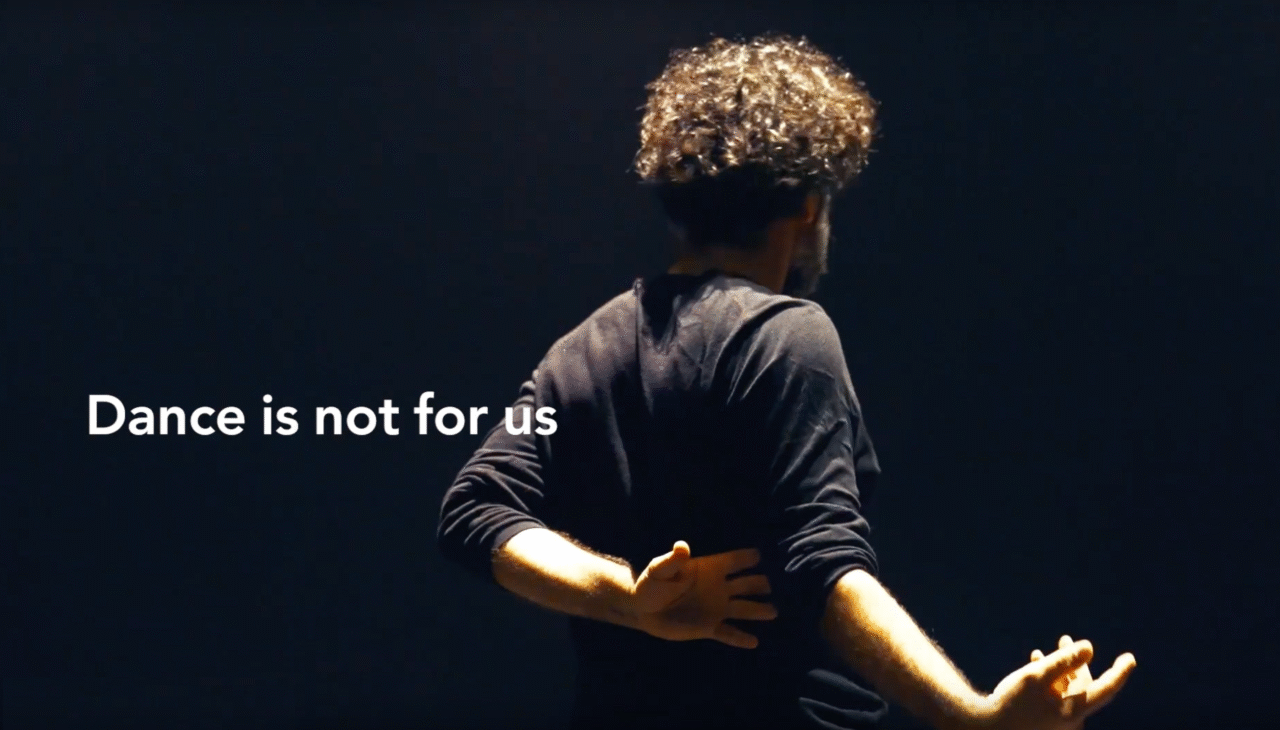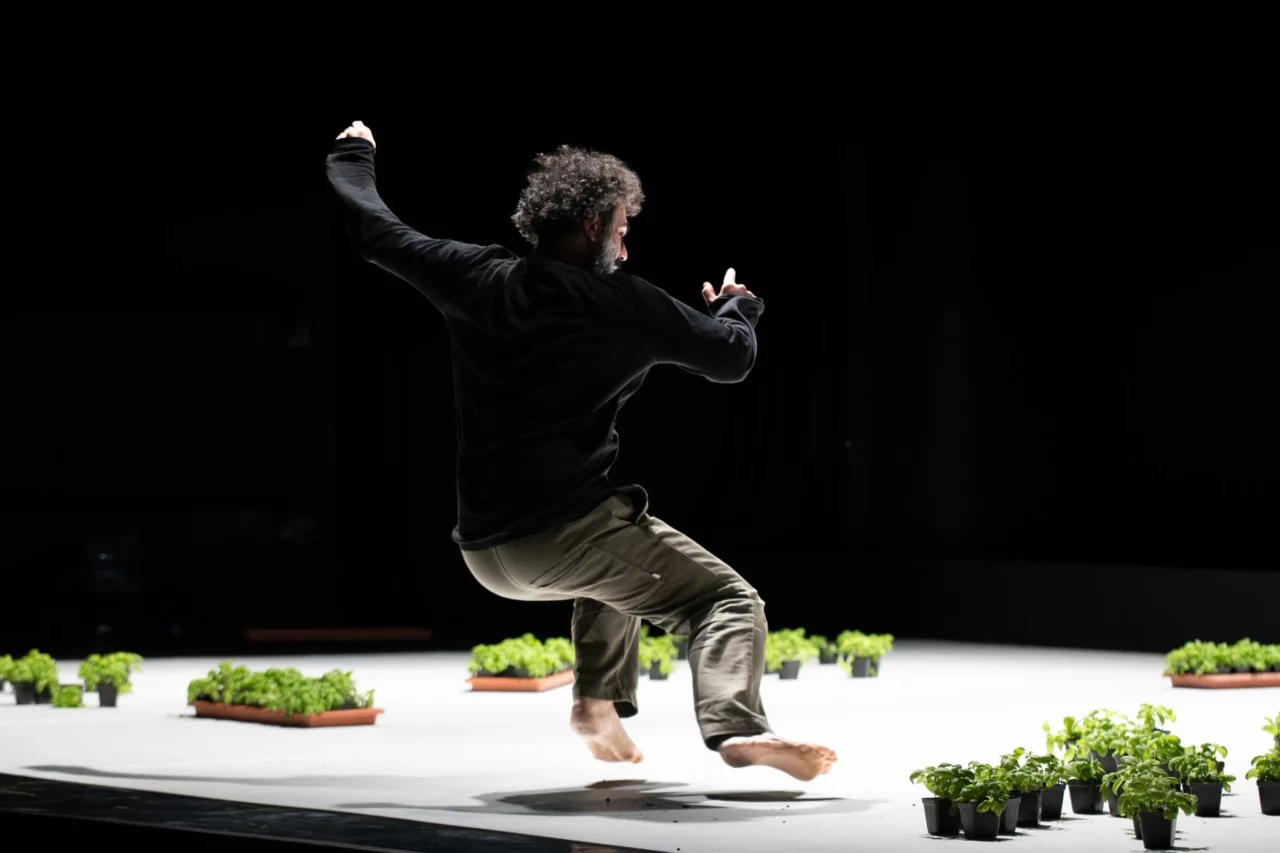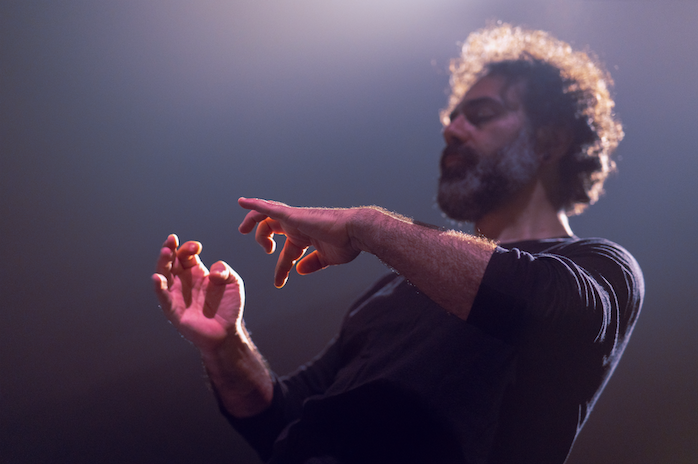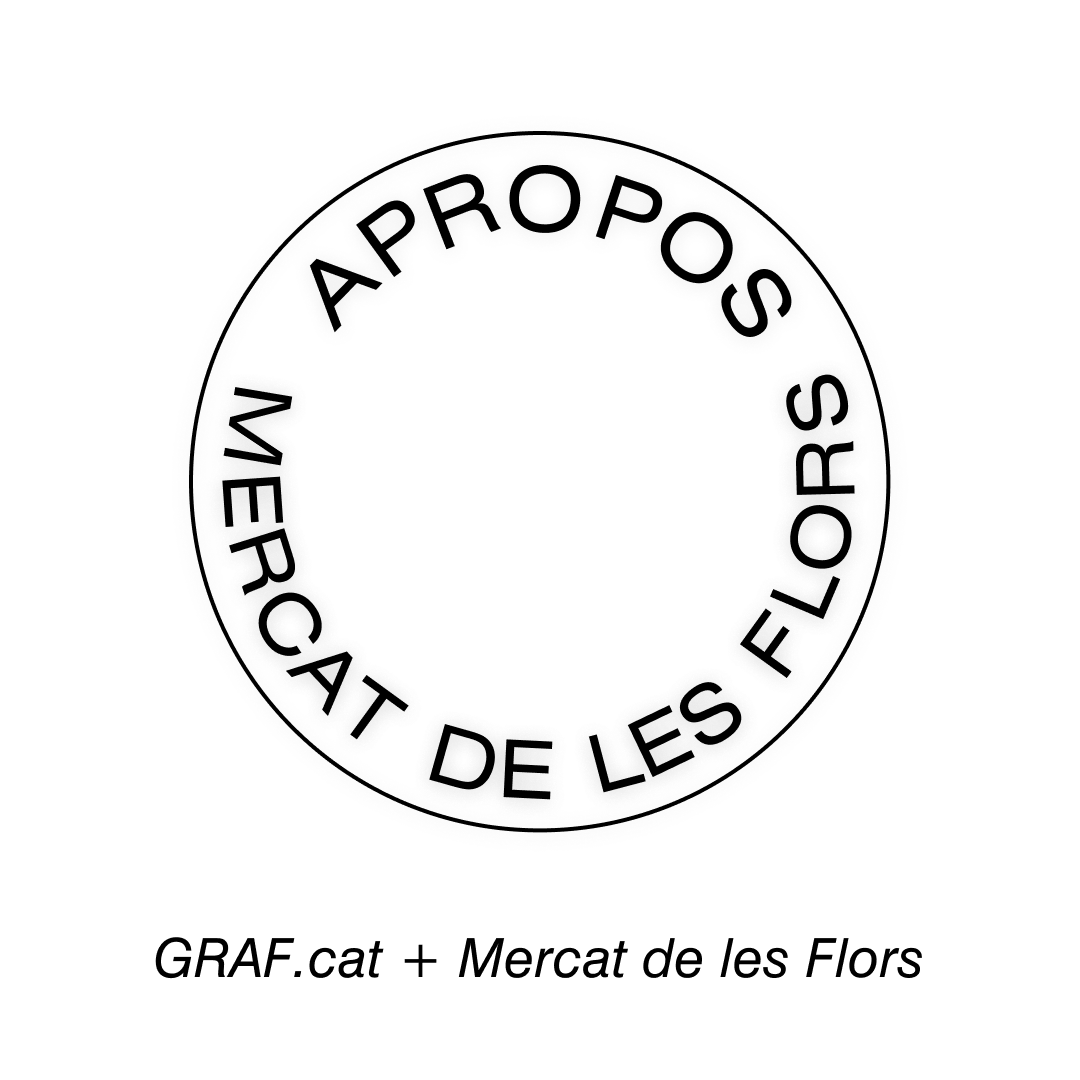 –
–
If we, the ones who can dance, do not, then who will? If dance is not for us, who is it for? These are the questions presented by Omar Rajeh as he presents his new work Dance is not for Us at Mercat de les Flors on 1 and 2 November. “Dance is not for us”, a majestic plural with which to frame a prohibition, an allusion to a past marked by impossibility, but also an invitation for Rajeh’s to allow him to once again express his artistic impulse. On stage, the artist seeks to reconcile the present with the memories and wounds of the past, through the almost ritual gesture of movement. With Rajeh, the Mercat de les Flors brings to the fore reflections on memory, vulnerability, the power of the body as a space for action, and resistance against the structures that condition our existence. His dance, more than a form of movement, is presented as a way of being in the world, an ethical and political gesture that invites us to rethink what it means “to be” and “to be together” in a present marked by violence, crisis, and the loss of collective meaning.
In this Apropos, the second of a set of three, we speak with the three of the artist of the upcoming season at the Mercat de les Flors and reaffirm a constant idea in each new blossoming of the theatre: dance as a critical impulse and as an act of hope. In this case, Omar Rajeh, one of the most relevant figures in contemporary Lebanese and Arab dance, and founder of the Maqamat company, once again places the body and movement as territories of resistance and reflection, having presented his work in over a hundred cities worldwide.
During the 2023–2024 season at the Mercat de les Flors, you presented Beytna, a communal and multicultural gathering that invited collective celebration through the active participation of the audience. In this 2025–2026 season, you take a turn and present Dance is not for us, an introspective solo that emerges from absence, trauma, and hope. How do you approach the transition between the act of community-building on stage and the expression of a solo dance piece, as reflected in the two pieces that you have presented at the Mercat de les Flors?
Beytna is a performance about sharing, a question of how we go into the space of the other and allow the other to be in our space. So it creates this kind of joy of intimacy, of shifting perceptions. The space in the theatre suddenly changes, from the spectator who is sitting, to the spectator who is on stage, engaging in the event, being part of it, and sharing in shaping its Choreography. While, Dance is not for Us, from the very beginning, it sets a feeling of immediacy and action towards the future. The stage and the audience are one, as if the people who are present, ‘the citizens’, are more a part of an action, rather than just sharing something. For me, I always imagine it as similar to he feeling of a demonstration, where people gather together. They don’t know each other, maybe they’ve never met, and they are different on many levels but all of them share the same aim, the same objective or demand. So, with the solo, this idea of gathering moves more towards a kind of common action.
Nevertheless, the communal experience remains implicit in Dance is not for us: even from its very title, you evoke a plurality through which to address the shared experience of a non-existent past. On stage, how do you conceive this connection with a past related to pain and trauma? What roles do personal and collective memory play in your dance when constructing a bodily language that is both expressive and full of meaning?
I really don’t see Dance is Not for Us as a work about trauma, you know? For me, the work is about the right to be, the ability to affirm ourselves beyond these power structures that shape our everyday lives. The whole performance is really against power structures, this is the main direction.
And I say this because the act of remembering in the piece is not a reflection on loss. It is an act of doing, of being present in the immediate moment. The work talks about the past, yes, but it always does so as part of the present. It reflects on the past with a strong motivation towards the future. That’s exactly what I was saying before, there is a feeling of common action with the audience.
For me, while creating this work, it was very important not to frame it from an emotional or victimised perspective. That’s why I say it’s not really about trauma. When we talk about remembering, it’s not about suffering, rather it’s about survival, about continuing, about finding possibilities within the unbearable conditions. So, in a sense, the body becomes a space where memory is active. It’s not contemplation: the memory is alive, Dynamic, and through dance, through these reflections, it pushes towards the possibility of a future, of looking at things differently and owning our past.
 –
–
In your stage composition, the performer’s body is understood as an essential medium in the act of communication. Vulnerability is more present than ever, and the message is communicated through the strength of movement and spoken word. How do you conceive your own position within this dance piece presented at the Mercat de les Flors, in which all expressiveness is concentrated in a single stage body?
There are aesthetics, of course, in the movement, in the shapes and in the dynamics. But what is more essential for me are the connections within the body itself, and how they happen. This is how I work. I work with what I call centres of signification within the body. The movement, or even more than the movement, the situation, emerges from this dialogue inside the body, from the conversation between its different parts.
From this perspective, I feel the body is somehow naked, in the sense that we see everything. As a performer, I feel I cannot hide anything on stage because I am working with the inner rhythm, with the rhythmic presence of the body, and with how this inner composition communicates outward. For me, dance is not really about showing or doing a movement; it is about the question of relationships within the body itself, the composition of presence that the body creates, and movement is one element. That is why there is always a sense of vulnerability, of being completely open, without hiding anything.
Inevitably, this past carries a heavy burden of pain, which you use to connect with an audience capable of resonating with other forms of suffering. In this sense, the act of transmission becomes an artistically generous gesture, with great potential for reflection within your body of work. How do you envision the act of sharing with your audience from the stage? In what way can your choreographic practice be understood as a gesture of resistance against structures of power?
Like I said, the performance itself is about questioning what we could call structures of power. And immediately, when I say Dance is Not for Us, what follows in my mind is: are we free? Are we allowed to dance? Who is “us”? And who sets these rules? From this perspective, I feel that what I do in this work, and probably my work in general, carries a gesture of resistance. It’s beautiful, actually, this idea of a gesture of resistance.
And of course, as I said, the work is not about trauma, but it carries a certain heavy burden. However, what is important is not to sink into emotionality. That’s the difficult part. In the performance we are dealing with a very tough topic; it’s heavy, it’s painful in a sense. The challenge, or the delicacy, for me, was to ask: okay, this was a reality, it happened, how can we talk about it as it is, without falling into emotionality? And this is probably also where the idea of resistance comes in. The proposal is to act, the proposal is to be together, to share a moment here and now with the audience, rather than just reflecting on something that happened in the past.

–
The great failures of humanity (now translated into unprecedented wars and genocides) force us to reconsider the role of art within an ethical framework, in the face of the magnitude of horror; an art that must avoid the comfortable aestheticisation of what is happening today. In your case, this ethical and aesthetic awareness leads you to assert that dance “is not for us”, that we have no right to dance without acknowledging the gravity of the world. How do you understand dance beyond movement—as a way of inhabiting the world? In what ways does hope manifest itself on stage, especially in a present marked by geopolitical crises and the loss of collective meaning?
There are several points that immediately come to my mind here. First of all I see dance as a confirmation of presence. And this, the questioning of dance, or the questions posed in performance, are deeply, questions of where we are, what we do. It’s as if we try to touch on things to confirm that we are present. And, of course, it’s a critical approach: how are we present? In what ways?
I think also, today, given where we are in time, it’s not possible to ignore what is happening. As you said, for example, in the question about genocides, the magnitude of what’s happening and dealing with it lightly and irresponsibly, almost becomes a criminality. And this is extremely dangerous. We are, of course, entering a totally new world, and that’s why we need to act. I believe it’s impossible, as I said, to ignore what’s going on. We are part of this existence, part of what is happening, part of the everyday news.
At least for me, it’s very difficult to say, “OK, this is happening far from me.” I believe that there is no “far” anymore. What is powerful, and also scary, is that words, images, and texts live with us all the time. Wherever we are on this planet, we cannot avoid being in contact with them, especially through social media, through these huge networks of information that bring everything to us immediately.
So it’s not possible to detach ourselves. The core question, then, becomes: because we know what is happening, because we see it and read about it, how do we position ourselves? What kind of values do we uphold? What do we do, and what do we not do? What can we do, and what we cannot do? This is, the most important, or the core, of the questioning.
This is especially true in dance, because dance is a medium of being. The body is our main tool. It’s always a question of being, and therefore a question of values, of how we perceive our lives, how we want our lives to be, and under which conditions, framed by which ethical frameworks. Perhaps, it is again important to always remind ourselves of: what are the values of living?
Your artistic actions are interpreted as spaces of encounter from which to question ways of inhabiting and to formulate difficult, perhaps unanswerable, questions. These questions arise from specific contexts, such as Beirut, where you were able to take dance to unprecedented levels. What were your main references when you began developing the Maqamat company, a company that has made it possible to build an artistic community in Lebanon? Given that collectivity is a central axis in your work, how did you experience this process in your native context?
When we sometimes talk about Beirut, or think of Beirut, we immediately link it to difficult situations or harsh realities, which is correct. However, at the same time, this also became a kind of richness for me and the people I was working with. Richness in the sense that you are immediately confronted with important questions, as if there is no time to waste. In front of such strong realities, you go straight to the priorities. And for me, this was really enriching: I found myself in Beirut reflecting deeply on confirming my presence, searching for how to be, and in what way to be.
This became, probably, the main model for me in all the work I did, starting from my first performance in Beirut until today. It was always about going straight to the priorities and questioning our presence, this idea of being in space and encountering others. Over time, this approach also shaped my understanding of the body.
I developed this idea of “circling,” where I look at the body as a multitude of bodies. Our bodies are not just one body, but a composition of bodies, and dance happens when we rearrange these compositions, creating dialogue and relationships within the body. And here comes the question of space, not just as form, but as a question of inhabiting, of being. How do we, for example, allow the other into our space?
Space then takes on a different connotation, it is not only a mathematical or geometric idea, but a certain value, a perception of life. This, for me, became central. I was always building on these ideas that open possibilities.
Beirut, as I said, is a difficult situation, but it is also a rich one, a mosaic of differences. In the streets of Beirut, in everyday life, you can feel the energy of the city, the creativity of its people, their search for solutions and possibilities. This environment allowed the festival, my personal work, and the people I worked with to create a certain momentum, a movement that, hopefully, still resonates and will continue, even though the situation remains very difficult at the moment.
______
APROPOS is content created in response to something happening in our artistic context. On this occasion, in collaboration with Mercat de les flors, we present a trilogy of interviews related to Hacer historia(s) VI cycle organised by La Poderosa.

